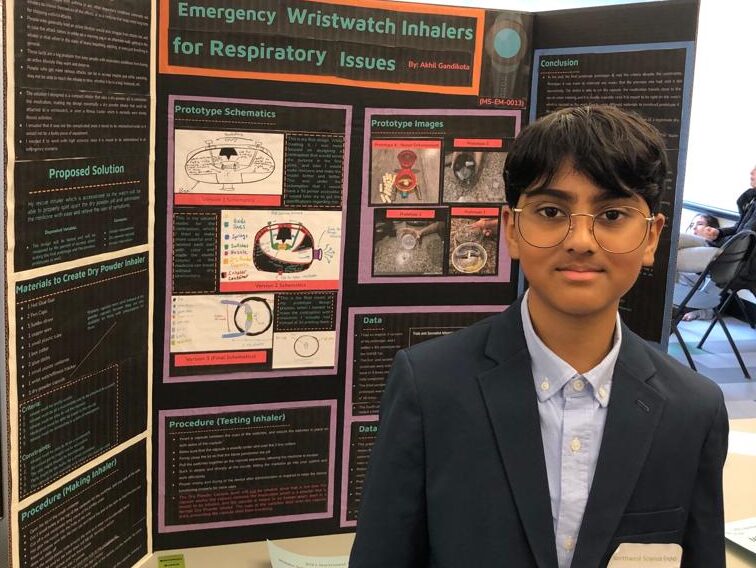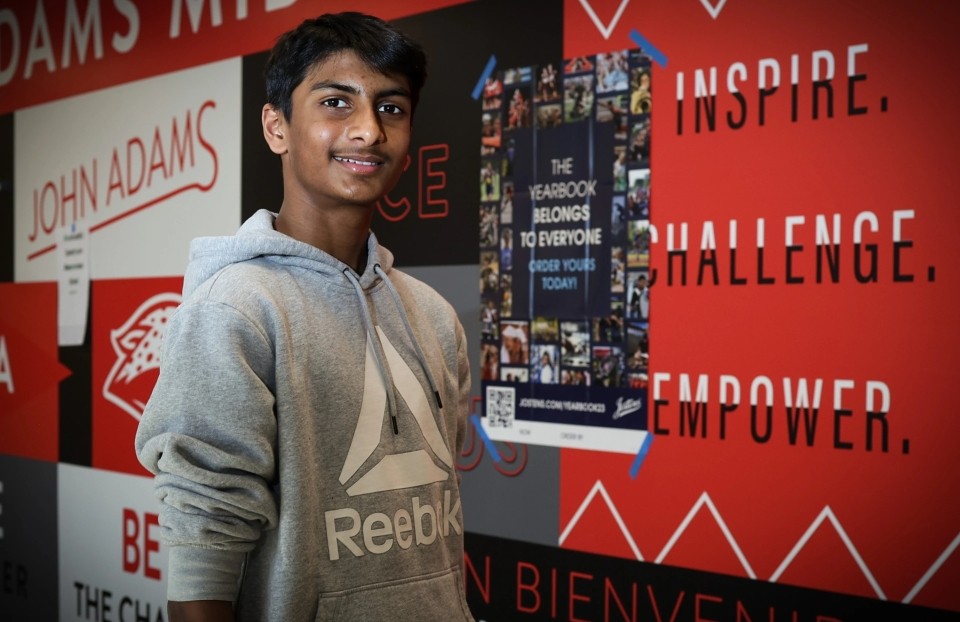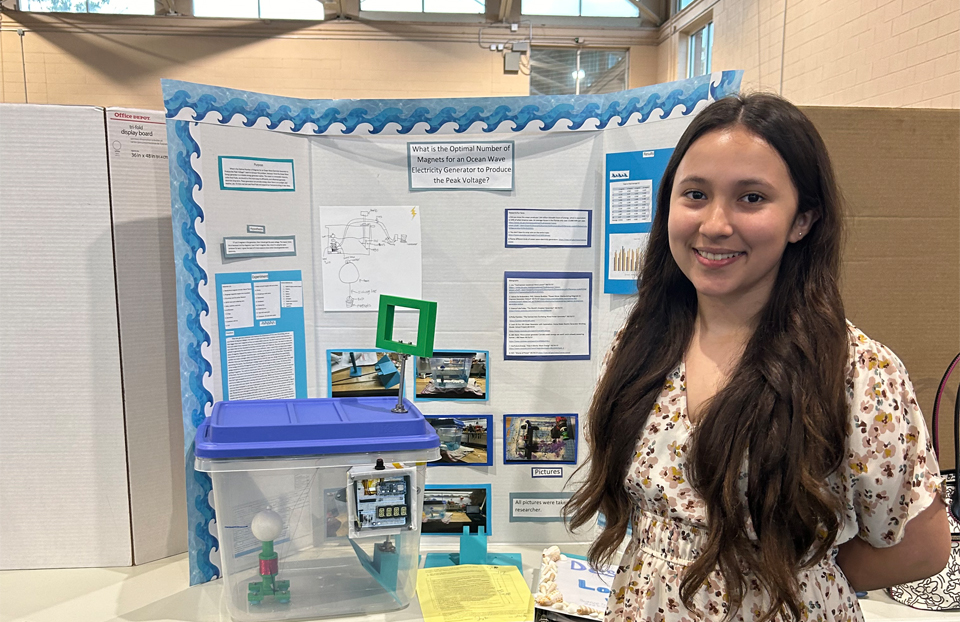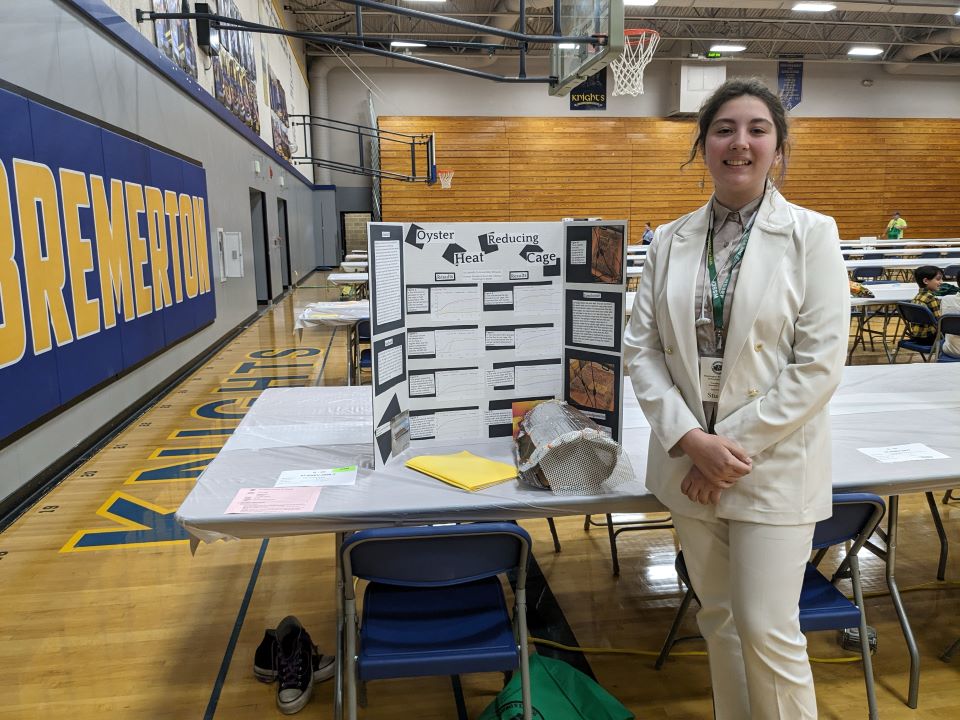A friend’s experience with asthma inspired this eighth grader to create a wearable inhaler for emergency relief on-the-go

For the fifth year, The Lemelson Foundation is giving $100 awards to outstanding young inventors in Society Affiliate Fairs with middle school participants around the country. The prize was created to reward young inventors whose projects exemplify the ideals of inventive thinking by identifying challenges in their communities and creating solutions that will improve lives.
Being a black belt in martial arts, Stoller Middle School eighth grader Akhil Gandikota is used to working out hard enough to feel out of breath. However, during a drill one day he noticed that his friend’s face had turned red, and he was so short of breath that he had to pause and go searching through his bag. It turned out Akhil’s friend was having an asthma attack and needed to find his inhaler to treat it.
“I thought about if I was in the same place,” Akhil said. “Rummaging through a completely packed back for a small inhaler would be extremely frightening.”
So, when the science fair came around, he told his friend he was building a prototype “just for him” and got to work building an inhaler fitted to a wristwatch or health tracker to help those with asthma or other respiratory problems find on-the-go relief. In the end Akhil completed three prototypes of the Emergency Wristwatch Inhaler, the third of which had a near-100% success rate and is currently working on a fourth.
“I was trying to solve the problem of asthma making it harder to lead an active lifestyle,” Akhil said. “I know that a large population in this world struggles with asthma, including some people close to me. This invention I made will be able to stop emergency asthma attacks.”
The inhaler works by splitting a dry powder capsule containing medication, allowing the user to inhale the medicine through the nozzle attachment. Akhil began his prototyping process by researching how to make the type of medicine that inhalers use fit in a compact, wearable device. His research led him to dry powder inhalers and capsules, and he then began the slow process of figuring out how to make a wearable device capable of breaking a capsule to deliver prescribed medicines to the user.
As he didn’t have access to a 3D printer, Akhil had to get creative as he began the process of putting his device together. He said finding materials to bring his design to life was a fun challenge, but the most interesting part was experiencing the engineering process firsthand. Working on an invention from the initial idea through three rounds of prototypes gave Akhil a newfound appreciation for “how much work and ideating” goes into making even the most basic tools. He said that in retrospect, his prototype doesn’t seem as complicated to him now as it did throughout the research journey, but that having made it himself he understands “how much research and hard work went into the simple design.”
Akhil’s Emergency Wristwatch Inhaler received the Lemelson Early Inventor Prize, which Akhil said has inspired him to “make the inhaler the best it can be and make the world a better place.”
So far Akhil has gotten only positive feedback from classmates and evaluators. As he works on his fourth prototype, Akhil has begun thinking about seeking additional professional feedback so he can hopefully patent and pitch the wearable inhaler to medical device companies and help an even greater number of people. He plans on pursuing medicine in the future, and said this invention was his way of making “contributions to the medical field, even without being a professional.”


